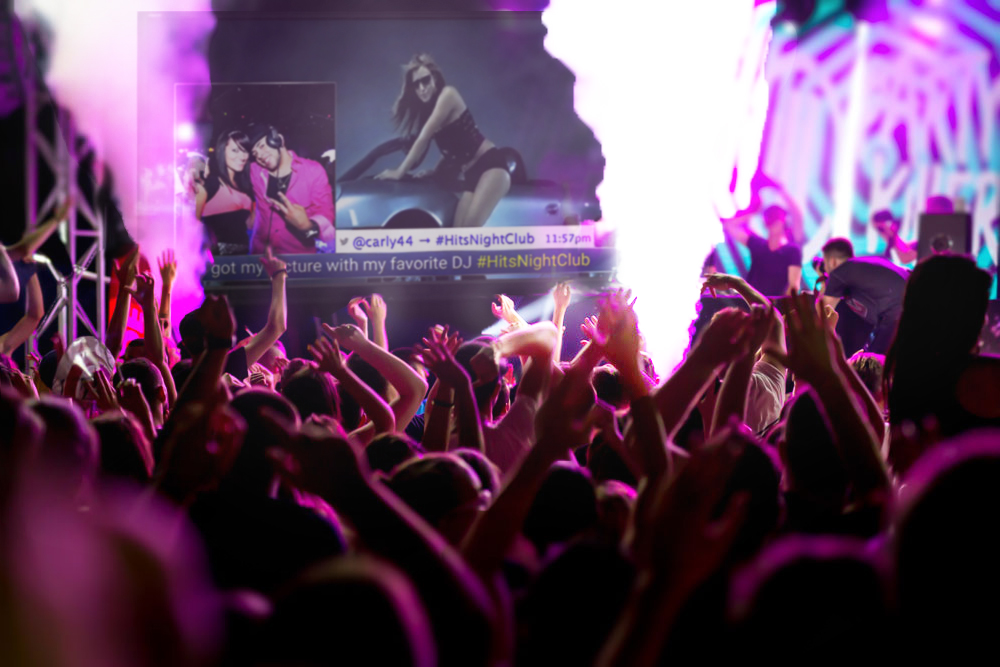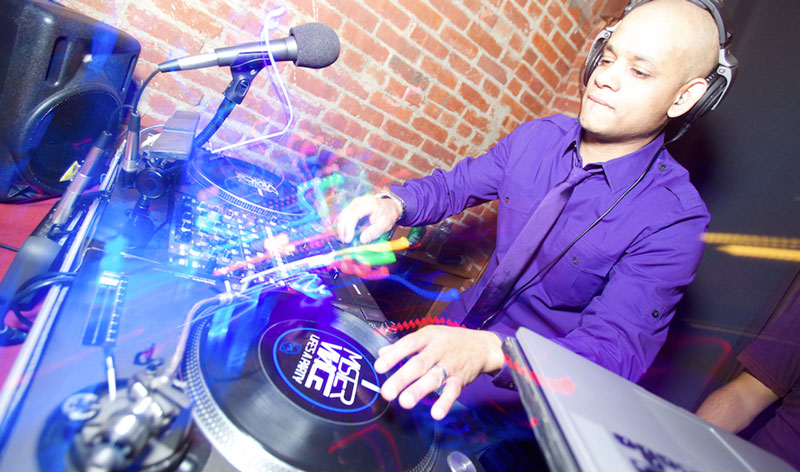Getting Started With Video DJing
August 18, 2016

Much like traditional, audio only DJing, video DJing is all about rocking the party and moving the crowd. However, as a VJ (video jockey), you have the advantage of tapping into your audience’s visual senses as well as auditory. This extra dimension can definitely take your sets to the next level, but you’ll need to do some research and pre-planning before you get behind the decks at your first video DJing gig.
Years ago, to pursue DJing with videos, the initial cost of the equipment was an insurmountable barrier for many. Fortunately, with today’s technology, you can start spinning videos for a few hundred dollars. Even less if you already use some of the more popular DJ programs and hardware. Let’s start by taking a look at what you’ll need to get started.
Software

When it comes to industry standard software for video DJing, there are three main choices, Serato Video, MixEmergency, and Virtual DJ. Which one is right for you? It all depends on what you currently use. Any one of these choices will get the job done, so it all comes down to preference and familiarity. If you are already a Serato Scratch Live user who doesn’t plan on upgrading to Serato DJ, you should go with MixEmergency by Inklen ($199), which is still 100% compatible with Scratch Live. However, MixEmergency only works on Macs, so if you are a PC DJ, you’ll need to find another program. If you’re a Serato DJ user, you can also use MixEmergency, or, you can choose to go with Serato Video ($129). Both programs are packed with features and effects, but the general consensus from DJs online is that MixEmergency is a more advanced and feature-rich video DJ software than Serato Video. Lastly, if you are currently a Virtual DJ user, you can use the same software to DJ with videos, with or without a controller. Keep in mind, however, that only Virtual DJ Professional supports full screen video. So, if you’re on a free version of the software, you’ll need to upgrade.
Hardware

Fortunately, video DJs of today no longer need to lug around binders full of DVDs (or laserdiscs) like their industry predecessors. Over the years, file codecs have improved, and digital storage has gotten more affordable, making it easier that ever to have a deep library of music videos at your fingertips. Unfortunately, even the best music video library can be rendered useless without a computer capable of providing the processing power needed to effectively mix music videos. Even though a low to mid level computer might be fine for audio only DJing, proper video DJing requires a beefier (and most likely higher priced) computer or laptop. The key things to keep in mind when choosing a laptop for video DJing are the specs of the graphics card and processor. Since video files take up more space than audio-only files, it’s also important to make sure your machine has adequate storage. Once you have decided on which software you will be using, make sure you find out what its minimum software requirements are. Keep in mind that in most cases, only meeting the minimum requirements will result it poor performance and limited functionality. It’s best to base your laptop choice on the “recommended” spec requirements, or going even further to ensure compatibility with future features and effects of the software.

With a proper video DJing laptop selected, it’s time to figure out what you are going to use to mix your videos. The good news is, no matter what you’re currently using (turntables, CDJs, or controller), you can probably mix videos with it! As long as your DJ weapon of choice works natively with your software, you should be good to go! Keep in mind that if you are more of a turntablist club DJ, the mixer you use should have a crossfader that is or can be midi mapped to the video DJing software. This way, you can still crab, chirp, and transform with music videos, just as if they were audio only tracks.
Videos and Content
Next, before you can rock the crowd with you video DJ set, you’ll need to curate a library of music videos. If you’re a club VJ, then check out smashvision.com. They are a great online music video pool for DJs, and most of their videos are edited to have intros and outros for smoother mixing. If you’re not concerned about intros and outros, you might want to check out Promo Only (www.promoonly.com). They’ve been a major player in the DJ music pool game for years, and now offer music videos as well. Lastly, if you need to fill in any gaps in your library, you can find almost any music video on iTunes for around $2.
No matter how hard you try, you probably won’t be able to obtain EVERY music video that you would like to include in your live set. Keep in mind that, just because your are video DJing, it doesn’t mean that you have to just play videos. In fact, it’s actually a good idea to rotate other content along with your videos on the screens, just to keep things fresh!

JammText is a text to screen software for DJs that allows you to interact with your crowd throughout the evening during your sets. By using hashtags or a dedicated phone number, the audience can send texts, photos, or social media posts right to the screens. Since JammText works with Serato Video, Mix Emergency, and Virtual DJ, you can quickly approve or deny the messages through a small approval overlay window on your laptop screen. JammText is intelligent enough to detect if a music video is playing on the screen, and display itself as a small overlay banner as the video plays. When you drop an audio only track into the mix, it can detect this as well and automatically switch to full-screen mode, so that you’ll always have a screen full of content. Check out jammtext.com for a full list of features and pricing.
Hooking it All Up at the Club

Now that you’ve got your video DJ software, hardware, video media, and hopefully a gig, it’s time to connect to the projectors or TVs. Although HDMI connections are quickly becoming the industry standard, you may still encounter VGA or even DVI connections at some venues. If you’re planning on dropping a video DJ set at a new club, it’s important to contact them beforehand to find out what type of connection they have available. If your laptop does not have the necessary port for the particular connection, hop online or visit a local store to pic up an adapter. For example, if you are using a Macbook Pro without an HDMI output, you simply need to purchase a Mini DisplayPort to HDMI adapter. Also, make sure you have any additional cables needed for connecting to the screens at the venue. You may also need an HDMI splitter if the club is new to video in order to split the signal to feed multiple displays. In certain club scenarios, it may be impractical or outright impossible to run an HDMI cable to the screens or splitter. If this is the case, it’s a good idea to invest in a a wireless HDMI transmitter and receiver. A high-quality wireless HDMI system will set you back $200-$400 (or more), but it will ensure that you are prepared for any setup configuration. For various cables, splitters, adapters, and wireless HDMI kits, check out monoprice.com and amazon.com.
Once connected to the screen or projector, you’ll need to open up the display settings on your computer. If the computer hasn’t already detected the external display, you’ll need to click on the “Detect Displays” button. Then, you’ll need to make sure that “Display Mirroring” is not selected. For video DJing, you’ll want to use the “Extend the Desktop” option. This will allow you to display the DJ software on your screen while displaying the videos and content on the external screens. Then, it’s as simple as dragging the video display window off of your laptop screen and onto the external display. Once the window has been dragged over to the second display, just double click it to enter full screen mode.
Now, you’re ready to rock your set and embark on an adventure into the realm of video DJing!